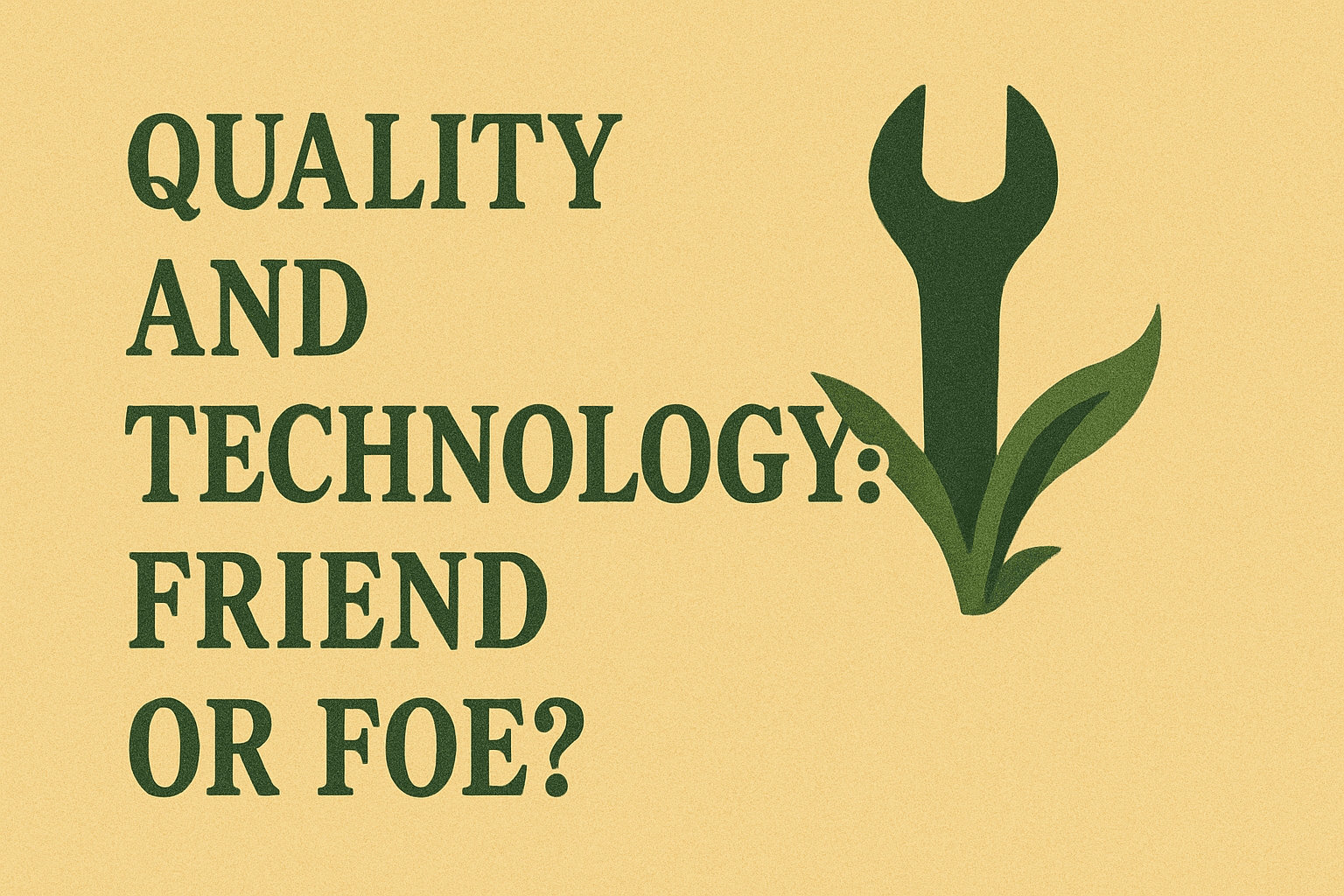Discussing the impact of technological advancements on quality, balancing the benefits of innovation with the potential loss of craftsmanship and human connection.
Technological advancements have profoundly transformed nearly every aspect of modern life, from how we communicate and work to how we produce and consume goods. While technology undoubtedly brings numerous benefits, it also poses challenges to the concept of quality, particularly in terms of craftsmanship and human connection. This article explores the dual nature of technology as both a friend and foe to quality, examining how we can balance innovation with the preservation of intrinsic values.
The Benefits of Technological Advancements
- Efficiency and Productivity: One of the most significant benefits of technology is the dramatic increase in efficiency and productivity. Automation and advanced machinery enable faster production times and higher output levels, reducing costs and increasing accessibility to goods and services.
- Innovation and Creativity: Technology fosters innovation and creativity by providing new tools and platforms for experimentation. Digital technologies, such as 3D printing, virtual reality, and artificial intelligence, open up new possibilities for design and problem-solving, pushing the boundaries of what is possible.
- Enhanced Communication: Technological advancements in communication, such as the internet and mobile devices, have revolutionized how we connect with others. These tools enable instant, global communication, fostering collaboration and knowledge sharing across distances.
- Quality Control and Precision: Advanced technologies improve quality control and precision in manufacturing and other industries. Sophisticated sensors, data analytics, and automation systems ensure that products meet high standards of consistency and reliability.
The Potential Loss of Craftsmanship
- Devaluation of Craftsmanship: As technology automates more tasks, traditional craftsmanship can be devalued. Handcrafted items, which require time, skill, and attention to detail, are often overshadowed by mass-produced goods. This shift can lead to a loss of appreciation for the artistry and expertise involved in manual production.
- Loss of Skill: The reliance on automated processes can result in the erosion of manual skills. As machines take over tasks that once required human dexterity and ingenuity, the transmission of these skills to future generations diminishes. This loss affects not only individual artisans but also the cultural heritage of craftsmanship.
- Homogenization of Products: Mass production often leads to the homogenization of products, with standardized designs and minimal variation. While this ensures uniform quality, it can also stifle individuality and creativity, resulting in a loss of uniqueness and character in the items we use and cherish.
The Impact on Human Connection
- Digital Overload: While technology enhances communication, it also contributes to digital overload and superficial interactions. The constant barrage of information and the emphasis on online connections can detract from meaningful, face-to-face interactions, weakening the quality of our relationships.
- Isolation and Alienation: Increased reliance on technology can lead to feelings of isolation and alienation. As people spend more time interacting with screens rather than with each other, the sense of community and social cohesion may suffer.
- Distraction and Attention: Technology’s pervasive presence can fragment attention and reduce the quality of experiences. The constant distractions of notifications and digital media can prevent deep, focused engagement with tasks and with other people.
Balancing Innovation with Quality
To ensure that technology serves as a friend rather than a foe to quality, it is essential to strike a balance between embracing innovation and preserving craftsmanship and human connection.
- Integrating Technology and Craftsmanship: Rather than viewing technology and craftsmanship as mutually exclusive, we can integrate the two. Technologies such as computer-aided design (CAD) and digital fabrication can complement traditional skills, enhancing the precision and efficiency of handcrafted items without compromising their uniqueness and quality.
- Promoting Skill Development: Education and training programs should emphasize both technological literacy and manual skills. By teaching the value of craftsmanship alongside technological proficiency, we can preserve traditional skills while preparing individuals for the demands of a modern economy.
- Fostering Human-Centered Design: In technology development, a human-centered design approach prioritizes the needs, experiences, and well-being of users. This involves creating technologies that enhance rather than detract from human connections, ensuring that digital tools support meaningful interactions and community building.
- Encouraging Mindful Technology Use: Encouraging mindful use of technology can help mitigate its negative effects on attention and relationships. This includes setting boundaries for digital consumption, prioritizing face-to-face interactions, and creating tech-free spaces and times to foster deeper engagement with people and tasks.
- Celebrating Unique and Handcrafted Goods: Supporting artisans and valuing handcrafted goods can counterbalance the homogenizing effects of mass production. By appreciating and purchasing unique items, consumers can promote the preservation of traditional craftsmanship and the quality it embodies.
Conclusion
The relationship between technology and quality is complex and multifaceted. While technological advancements bring significant benefits, they also pose challenges to craftsmanship and human connection. By striving for a balance that integrates innovation with the preservation of manual skills and meaningful interactions, we can ensure that technology enhances rather than diminishes the quality of our lives. Embracing both the efficiencies of modern technology and the timeless value of craftsmanship allows us to create a future where quality remains a central guiding principle.
